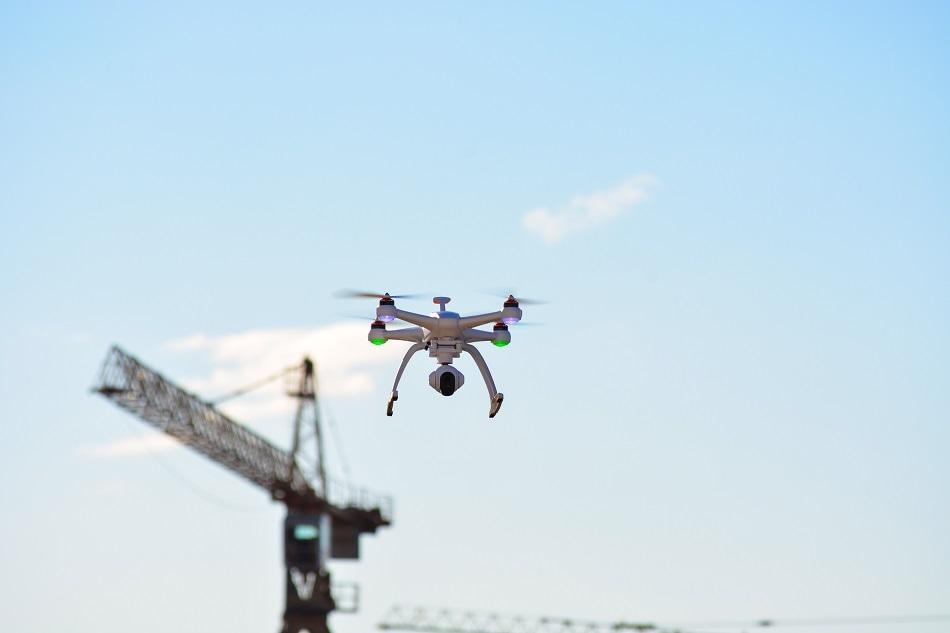Drones, or unmanned aerial vehicles (UAVs), act as an eye in the sky providing stunning videos and photographs for hobbyists; in the construction industry, images and recordings can be used to provide vital data that can be referred to over the course of a project. Drones offer many advantages, including capturing real-time images in the field, and can be used to improve communication and safety across the construction site.

Kavun Halyna/ Shutterstock
Surveying and Inspection
Drones have altered the way land surveys are conducted on construction projects and are rapidly replacing traditional land-surveillance methods. Before a project begins, a detailed picture of the lay of the land must be obtained, and a drone can do this much more quickly and accurately than a human.
Drones are filled with an array of sensors to collect data and can help automate the entire field-to-plan workflow, thus eliminating human error. Flight data can be used to take measurements and produce accurate surveys and contour maps based on high resolution point cloud data collected from on high.
This collation of data could help bring a project to life, allow for smarter decision-making by combining data with building information models, and improve organization throughout the lifetime of a project.
Drones can also be used for maintenance inspections of large structures such as roofs, bridges and towers. Such inspections can be costly, require access arrangements to be made and personnel to work at great height; drones can eliminate these issues and are a quicker and easier means of examining structures, providing high definition footage to engineers/surveyors on the ground.
Monitoring
Weekly or monthly monitoring is an important part of a construction project – stakeholders want to see what progress is being made – but rather than send someone around the site each week to take pictures, a drone can be utilized.
Regular flights around the construction site can offer a fast and efficient way to record and visualize progress in HD video and aerial shots. Furthermore, inspections can cover larger areas more resourcefully, and can be carried out more swiftly and more often with drones.
Drones offer round the clock monitoring, and such regular observation can also help improve site planning by providing a real-time snapshot of the site at that moment; the location of moving vehicles and cranes can be pinpointed for example, as well as looking at areas of potential risk across the site as a whole.
They can also be employed to look for cold spots within the building, or heat spots around electrical outputs using thermal imaging cameras; this information can provide engineers and surveyors with vital information when trying to identify and fix defects.
Health and Safety
Building sites are busy and dangerous places and each new site operative needs to undergo a health and safety induction; often these are generic and tedious. But drones can change this by allowing the trainer and trainee to visualize the potential risks – moving vehicles, cranes, active excavation areas – in real time, streaming footage in first person view (FPV). This gives the trainee the opportunity for a site-specific induction with risks relevant to that site, and hopefully reduce the risk of accidents and injury on each individual site.
Drones have the potential to eliminate numerous dangers and safety hazards while increasing workplace safety. For example, they can improve onsite health and safety by recording footage or taking images in hard-to-reach spots and high-risk areas from a safe area on site without putting any employee at risk.
Once a project is complete, drones can also be employed in building surveys, accessing the roof for example, which can be tricky to get to and require scaffolding, cherry pickers or ladders which are both costly and time-consuming. Using a drone not only saves time and money, but reduces health and safety risks involved with such activities.
Summary
Drones can capture amazing 4K HD videos and photos from unique angles and hard-to-reach areas, providing many advantages over deploying engineers and surveyors across the building site. They can not only save money and time by completing tasks more efficiently, they also improve health and safety by reducing the risk of incidents across the site.
Their use allows management to keep tabs on materials (and employees) and can improve the chain of communication by providing real time, up to the minute information about the state of the construction site.
References and further reading
Disclaimer: The views expressed here are those of the author expressed in their private capacity and do not necessarily represent the views of AZoM.com Limited T/A AZoNetwork the owner and operator of this website. This disclaimer forms part of the Terms and conditions of use of this website.